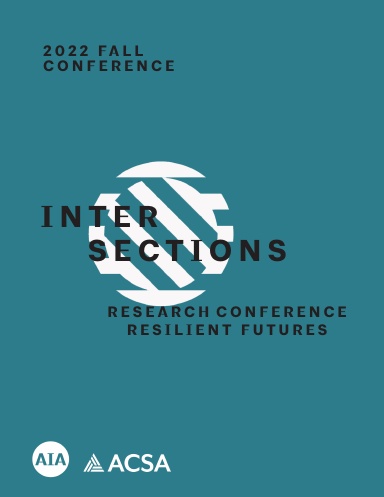Author(s): Daniel M. Cohen, Alexandros Tsamis, Daniel F. Walczyk & Sharmad Joshi
Implementation of renewable materials and building systems research into practice has proven challenging. Technologies such as mass timber, engineered mycelium, or hempcrete have understandably garnered attention, but their widespread adoption has been hampered by specific, yet unsatisfied performance metrics. This paper proposes an interscalar approach for the early stage validation of such technologies and for the development of a practical framework to guide further research. This approach begins by analyzing the design problem and identifying relevant and quantifiable performance metrics, before organizing them under “performance scales” that reflect a particular research discipline. The resulting framework provides identification of insurmountable obstacles, identification of required research expertise, and organization of the research effort into manageable tasks. This paper presents a case study utilizing this approach, specifically regarding non-corroding natural fiber composite reinforcing, for cementitious materials. Concrete is an indispensable component of infrastructure systems, but most of America’s infrastructure was built with little concern for long-term durability. Many of these structures are nearing the end of their service life and trillions of dollars must be spent to repair and maintain their operation. Only 2% of reinforced concrete is reinforcing steel by volume, but corrosion of that 2% leaves the remaining 98% of concrete at risk of failure. There are commercially available anti-corrosion rebar technologies available, but none are perfect solutions: some are easily damaged, others are incompatible with all concrete, and some are prohibitively expensive. This paper aims to address these concerns by utilizing an interscalar approach to validate the viability of a non-corroding composite rebar made from natural fibers and thermoplastics. This approach found that at the structural scale, natural fiber composites could achieve the same strength as steel and the same elasticity of GFRP with a fiber ratio of 44%-50%. At the processing scale, preliminary experiments indicate that “jacketing” the natural fibers with thermoplastic during the commingling stage resulted in the best fiber saturation at the consolidation stage of production. Finally, at the environmental scale, preliminary calculations indicate that natural fiber composites can be produced with 30%-50% less embodied energy than other non-corroding rebar technologies. These results not only demonstrate the viability of natural fiber composite rebar, but also the benefits of using an interscalar approach for early stage technology validation.
https://doi.org/10.35483/ACSA.AIA.Inter.22.22
Volume Editors
Gail Napell & Stephen Mueller
ISBN
978-1-944214-42-13

 Study Architecture
Study Architecture  ProPEL
ProPEL 
